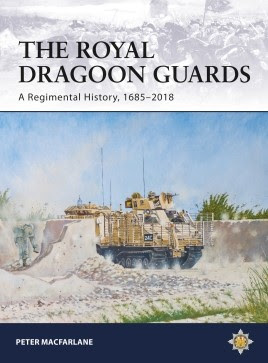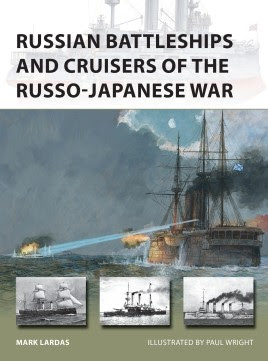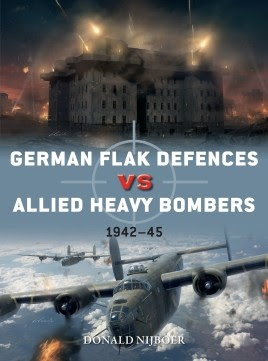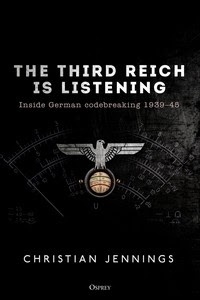Order Today
Armies of the Great Northern War 1700–1720
The Great Northern War was a long series of campaigns in which Russia, linked with several other countries in temporary alliances, confronted and eventually replaced Sweden as the predominant power in Northern Europe. While contemporary with the Duke of Marlborough's pivotal campaigns against France, the Great Northern War was in fact more decisive, since it reshaped the Northern European power balance up to the eve of the Napoleonic Wars.
It began with a series of astonishing Swedish victories lead by King Charles XII, from Denmark to Poland and deep into Germany. But Peter the Great of Russia showed steadfast determination, and Charles overreached himself when he invaded Russia in 1708; the Russians adopted classic 'scorched earth' tactics until they could destroy the Swedish army at Poltava in 1709, one of the most overwhelming victories in history. Nevertheless, Sweden continued to fight, and frequently win, in Germany, Denmark and Norway, until Charles's death in battle in 1718, though the war itself did not conclude until 1721.
This study explores, in detail, the numerous armies and complex alliances engaged in the war for Northern European dominance. Containing accurate full-colour artwork and unrivalled detail, Armies of the Great Northern War offers a vivid insight into the troops which battled for control of the North.
Soviet Partisan vs German Security Soldier
The savage partisan war on the Eastern Front during World War II saw a wide variety of forces deployed by both sides. On the Soviet side, civilian partisans fought alongside and in co-operation with Red Army troops and Red Army and NKVD ‘special forces'. On the German side, German Army security divisions, with indigenous components including cavalry, fought alongside SS police and Waffen-SS units and other front-line troops employed for short periods in the anti-partisan role.
In addition to providing the background history of the forces of both sides, this study focuses upon three examples of German anti-partisan operations that show varied success in dealing with the Soviet partisan threat. Notably, it covers a major operation in north-west Russia during the spring of 1943 - Operation Spring Clean - that saw Wehrmacht security forces including local components fighting alongside troops under the SS umbrella against a number of Soviet partisan brigades. During the fighting, German forces even employed captured French tanks from earlier in the war against the partisans.
Featuring specially commissioned artwork and drawing upon an array of sources, this is an absorbing account of the brutal fighting between German security forces and their Soviet partisan opponents during the long struggle for victory on World War II's Eastern Front.
Charlie Company's Journey Home
The Boys of '67 and the War They Left Behind
The human experience of the Vietnam War is almost impossible to grasp - the camaraderie, the fear, the smell, the pain. Men were transformed into soldiers, and then into warriors.
These warriors had wives who loved them and shared in their transformations. Some marriages were strengthened, while for others there was all too often a dark side, leaving men and their families emotionally and spiritually battered for years to come.
Focusing in on just one company's experience of war and its eventual homecoming, Andrew Wiest shines a light on the shared experience of combat and both the darkness and resiliency of war's aftermath.
The Royal Dragoon Guards
The Royal Dragoon Guards have a long and distinguished history dating from 1685. Originally raised as regiments of horse and dragoons, they were subsequently designated as the 4th, 5th and 7th Dragoon Guards and the 6th (Inniskilling) Dragoons. They fought in all of Britain's major wars from the late 17th century onwards, charging at Blenheim with Marlborough's cavalry, at Waterloo with the Union Brigade, and at Balaklava with the Heavy Brigade. In the 19th century, they also saw service in India and Africa.
All four regiments served in France and Flanders during the First World War and one regiment fired the first British shot on the Western Front. They were then amalgamated into two regiments - the 4th/7th Royal Dragoon Guards and the 5th Royal Inniskilling Dragoon Guards. Both regiments were mechanised shortly before the Second World War, in which they played a leading role in the D-Day landings. In 1992, the two regiments amalgamated again to form the Royal Dragoon Guards. Recent conflicts have taken the regiment to Iraq and Afghanistan, continuing a record of operational service covering more than three centuries.
This regimental history of the Dragoons tells their story as it played out across the centuries, exploring their role in both major and minor conflicts of the last 300 years. The title examines the development of the regiment up to the present day and highlights key figures across its history. The text is supported throughout with photographs and illustrations.
Petsamo and Kirkenes 1944
This title examines the bitter conflict between two highly tactical armies as they battled across challenging terrain to gain control of strategically significant Northern Finland. On the one side were the invading Soviet troops, hoping to liberate an area full of rich resources and littered with bases that that would enable the arrival of Arctic convoys from Britain. They employed naval infantry in abundance, not only to make amphibious landings to capture strategically significant port facilities, but also on deep outflanking manoeuvres inland. Their opponents were the elite Gebirgsjäger from XIX Gebirgskorps; trained to be self-sufficient and resourceful and equipped with a range of bespoke weaponry, this mountain division was ideally suited to operate in the harsh climate. Combat conditions were unique: the extremely rough terrain, laced with bogs, streams, boulder fields, and large rivers, presented a significant challenge in its own right, even without the added threat of attacks by highly trained soldiers.
This illustrated title tells the story of this unique and bitter struggle in the far North, an epic battle between two elite forces fighting in a demanding environment. With bird's-eye views and maps of key battlefields, this is a comprehensive guide to one of the most challenging campaigns of the Eastern Front.
Case White
The German invasion of Poland on 1 September, 1939, designated as Fall Weiss (Case White), was the event that sparked the outbreak of World War II in Europe. The campaign has widely been described as a textbook example of Blitzkrieg, but it was actually a fairly conventional campaign as the Wehrmacht was still learning how to use its new Panzers and dive-bombers.
The Polish military is often misrepresented as hopelessly obsolete and outclassed by the Wehrmacht, yet in fact it was well-equipped with modern weapons and armour. Indeed, the Polish possessed more tanks than the British and had cracked the German Enigma machine cipher. Though the combined assault from Germany and the Soviet Union defeated Poland, it could not crush the Polish fighting spirit and thousands of soldiers and airmen escaped to fight on other fronts. The result of Case White was a brutal occupation, as Polish Slavs found themselves marginalized and later eliminated, paving the way for Hitler's vision of Lebensraum (living space) and his later betrayal and invasion of the Soviet Union in 1941.
Using a wide array of sources, Robert Forczyk challenges the myths of Case White to tell the full story of the invasion that sparked history's greatest conflict.
Panzerfaust vs Sherman
In the summer of 1944, across the battlefields of Normandy, US tanks were confronted with a dangerous challenge: the mobile and deadly Panzerfaust and Panzerschreck anti-tank weapons wielded by the German infantry. Having only occasionally encountered such weaponry before, the US tankers were ill-equipped to defend against this kind of attack, and the threat only increased as the summer wore on.
This Duel title follows the technological battle for dominance that ensued, as the US Army devised new ways to defend against the threat posed by the German shaped-charge projectiles. From the addition of sandbags and spare tracks to individual tanks made by anxious crews on the ground to the large-scale programmes put together by the US armies, the book explores the implementation and effectiveness of the various tactics employed by the tank crews, as well as the technology behind the anti-tank weapons wielded by their German adversaries. Drawing on first-hand accounts from the men on the ground, this illustrated title examines the evolving trial of strength between US armour and innovative German anti-tank weaponry in the climactic months of World War II in Europe.
Douglas D-558
The six Douglas D-558 research aircraft, built as two variants, were produced for a US Navy and NACA collaborative project to investigate flight in the high subsonic and supersonic regimes and to develop means of coping with the dangerous phenomena of compressibility and pitch-up which had caused many accidents to early jets. Wind tunnels could not provide the necessary data so pilots had to risk their safety in experimental aircraft which, for their time, achieved phenomenal performance.
Both series of D-558 were well-designed, strong and efficient aircraft which enabled test pilots to tackle the unknown in comparative safety. Though delayed by their innovative but troublesome power-plants, and limited by the cost of their air-launched sorties, they went well beyond their original Mach 1 speed objective and continued to generate information that provided design solutions for a whole generation of supersonic combat aircraft. Although the final stage of the D-55 programme, the USN's ‘militarized' D-558-3, never happened, the Navy was able to apply the lessons of the programme to its much more practical combat types such as the F8U Crusader and F3H Demon.
Supported by full-colour artwork including three-view plates of the two D-558 models and a technical view of the D-2 cockpit, this authoritative text offers a comprehensive guide to the record-breaking Navy research craft.
B-58 Hustler Units
One of the most dramatic bombers of its day, the Convair B-58 came to epitomise the Cold War power of Strategic Air Command. Introduced only 12 years after the sound barrier was first broken, this iconic plane became the first large long-range supersonic bomber to take to the skies, a feat which had seemed far-fetched only a few years previously. Outstripping its contemporaries in terms of speed, and agile enough to escape most interceptors, the B-58 was a remarkable feat of engineering, setting 19 world speed records and collecting a host of trophies. The first operational bomber capable of Mach 2 at 63,000 feet, it was able to evade hostile fighters and represented a serious threat to targets across the Soviet Bloc.
Supported by contemporary first-hand accounts, photography, and full-colour illustrations, this study explores the history of this groundbreaking aircraft from its conception to its little-known testing for use in the Vietnam War.
Russian Battleships and Cruisers of the Russo-Japanese War
This book examines the major warships of the Imperial Russian Navy which participated in the Russo-Japanese War. The focus is on the battleships, coastal defence warships, and cruisers of the Pacific Squadron and Baltic Squadron that fought during the war.
It discusses in detail their design and development between the years of 1885 and 1905, concentrating particularly on battleships and cruisers. The book explores, in depth, the mutually influential relationship between Russian and foreign warship design, as Russia progressed from a reliance on foreign designs and shipyards towards an ability to produce its own influential ships, such as the Novik. The title also outlines the gripping operational history of the Russian warships which participated in the Russo-Japanese war, tracing their activity before and during the combat, as well as the post-war fate of those ships which were bombarded, scuttled, captured, or salvaged.
Packed with contemporary photography and full-colour illustrations, this title offers a detailed and definitive guide to the design, development, and destiny of the Russian warships which battled the Japanese in the Eastern seas.
The Paraguayan War 1864–70
The Paraguayan War, also known as the War of the Triple Alliance, was the largest and most important military conflict in the history of South America, after the Wars of Independence, and its only true 'continental' war. It involved four countries and lasted for more than five years, during which Paraguay fought alone against a powerful alliance formed by Brazil, Argentina and Uruguay. This conflict was remarkable in its huge scale and its terrible cost in lives, with the catastrophic human price paid by Paraguay amounting to more than 300,000 men, a loss of some 70% of the country's total population.
The war was a real revolution for the armies of South America, and the first truly modern conflict of the continent. When the war began in 1864, the armies were small, poorly trained and badly equipped semi-professional forces. However, by the time the war ended, most of them had adopted percussion rifles employing the Minié system and new weapons like breech-loading rifles and Gatling machine guns were being tested on the continent for the first time.
This title covers the whole span of the war, from the early days when the conflict primarily involved small columns of a few thousand men seeking each other out in rugged and sparsely inhabited territory, through to the later Napoleonic-style positional battles fought at points of strategic importance. It also explores the unique challenges presented by the humid, subtropical climate, including the devastating impact of disease on the troops.
German Flak Defences vs Allied Heavy Bombers
Since the end of World War II, the strategic bombing of Germany has inspired numerous studies, countless books and several documentary films, and it is not surprising. With more than one million tons of bombs dropped, close to 300,000 civilians killed, 700,000 wounded and in excess of 3,500,000 industrial and residential structures destroyed, the Allied bomber offensive was industrial war on a grand scale. The air battle that raged over Germany has often been described as a battle between Allied and German fighters but what has been frequently missed by historians on all sides is the impact of German anti-aircraft defences (flak). Though often dismissed as ineffective and a waste of valuable material and personnel, the German flak arm made a major contribution to the defence of the Third Reich - at least half of the American aircraft shot down over Germany fell to flak, and according to the RAF Official History, it was estimated that flak accounted for 1229 of 3302 aircraft lost by Bomber Command between 1942 and April 1945. Additionally, the strategic role of flak extended beyond simply shooting down aircraft - its other, more important task was to force bombers to drop their ordnance sooner or from a higher altitude, thus reducing bombing accuracy.
Both these roles are explored in depth in this detailed study of the German flak defences and of their adversaries, the Allied heavy bombers. Containing full-colour illustrations including cockpit scenes and armament views, this is the definitive guide to the much-overlooked conflict between Allied planes and German anti-aircraft defences.
On a Knife's Edge
The battle of Stalingrad was the turning point of World War II. The German capture of the city, their encirclement by Soviet forces shortly afterwards, and the hard-fought but futile attempts to relieve them, saw bitter attritional fighting and extremes of human misery inflicted on both sides.
The surrender of General Friedrich von Paulus's army left Germany's eastern armies severely weakened, but the Red Army had suffered enormous losses as it overreached itself in trying to exploit its great victory. The war was not over. Germany would continue the fight, and the battles that took place in the winter of 1942/43 would show the tactical and operational skill of Erich von Manstein and the Wehrmacht as they attempted to avert total disaster.
In this title, Prit Buttar, a renowned expert on warfare on the Eastern Front, reveals the often-overlooked German counteroffensive post-Stalingrad, and how it prevented the whole Axis front line from collapsing. Drawing on first-hand accounts, On a Knife's Edge is a story of brilliant generalship, lost opportunities and survival in the harshest theatre of war.
The Third Reich is Listening
The success of the Allied codebreakers at Bletchley Park was one of the iconic intelligence achievements of World War II, immortalised in films such as The Imitation Game and Enigma. But cracking Enigma was only half of the story. Across the Channel, German intelligence agencies were hard at work breaking British and Allied codes.
The Third Reich is Listening is a gripping blend of modern history and science, and describes the successes and failures of Germany's codebreaking and signals intelligence operations from 1935 to 1945. The first mainstream book that takes an in-depth look at German cryptanalysis in World War II, it tells how the Third Reich broke the ciphers of Allied and neutral countries, including Great Britain, France, Russia and Switzerland.
This book offers a dramatic new perspective on one of the biggest stories of World War II, using declassified archive material and colourful personal accounts from the Germans at the heart of the story, including a former astronomer who worked out the British order of battle in 1940, a U-Boat commander on the front line of the Battle of the Atlantic, and the German cryptanalyst who broke into and read crucial codes of the British Royal Navy.
Osprey Publishing Ltd














No comments:
Post a Comment